

TASK _ CREATE A VENTILATION SOLUTION FOR TINY HOUSES
︎︎︎
WHY ?
IDENTIFYING THE PROBLEM THROUGH EARLY ADOPTERS ...
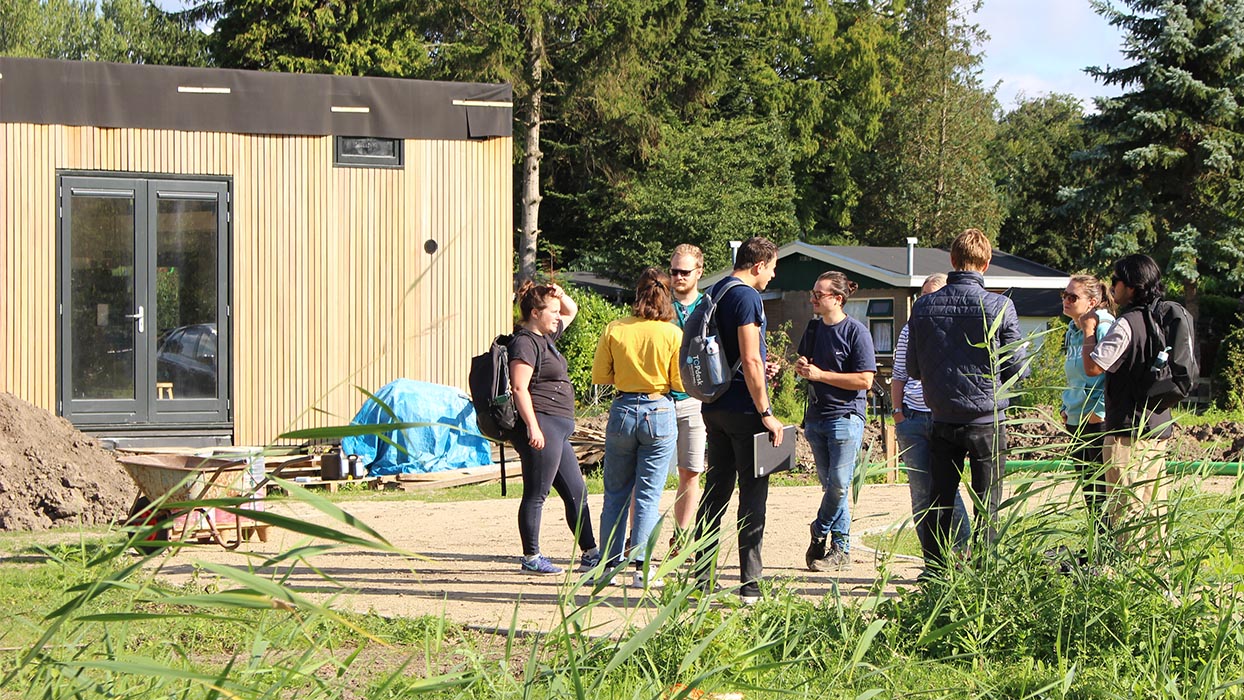




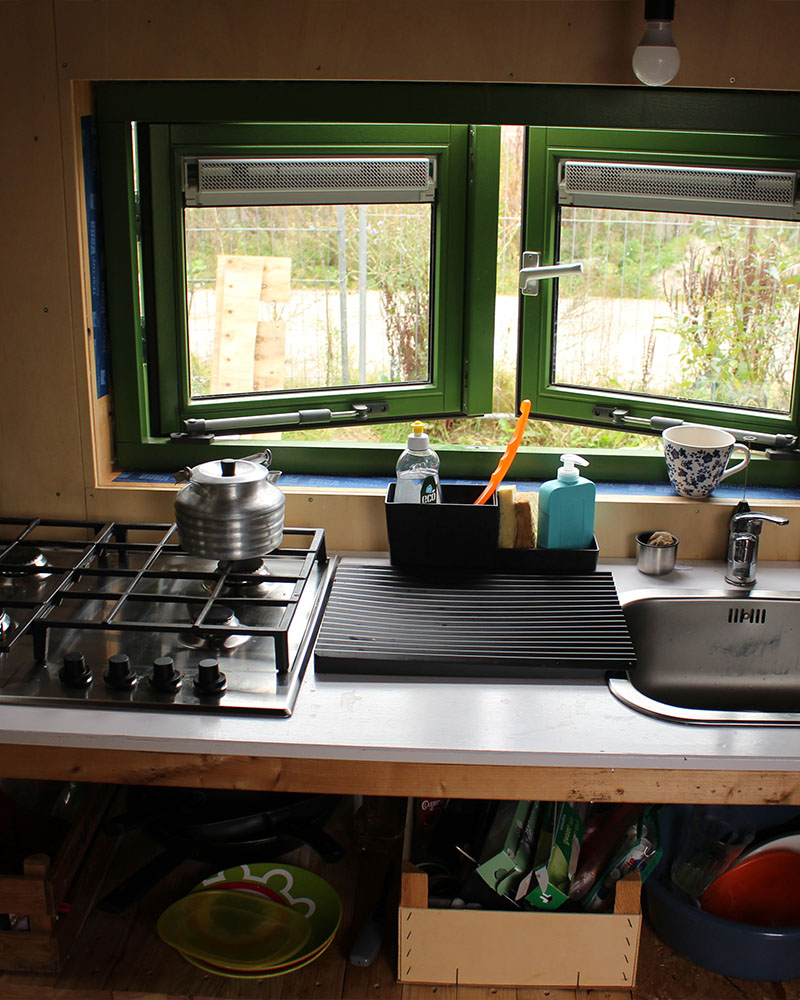




Fortunately, there are many Tiny House settlements in the Netherlands. In Rotterdam, we were able to visit a settlement that was under construction. In Kamerik we learned more about the commercial use of Tiny Houses and in Delft, we met people who have been living in a settlement for a long time and have gained a lot of experience. We investigated the house construction, the lifestyle of the inhabitants, and their energy usage.
We asked specifically about problems with indoor air and were able to quickly pinpoint issues that arise from reduced living space. Further Key-Insights:
01 _ The sustainability of such settlements goes beyond saving space and resources and aims for self-sufficiency. 02 _ The climatic difference between summer and winter is far more dramatic for Tiny Houses than in classic living situations. 03 _ Residents do not simply want to use things. They want to understand and grasp them in detail, which is expressed in a strong do-it-yourself mentality.
01 _ The sustainability of such settlements goes beyond saving space and resources and aims for self-sufficiency. 02 _ The climatic difference between summer and winter is far more dramatic for Tiny Houses than in classic living situations. 03 _ Residents do not simply want to use things. They want to understand and grasp them in detail, which is expressed in a strong do-it-yourself mentality.

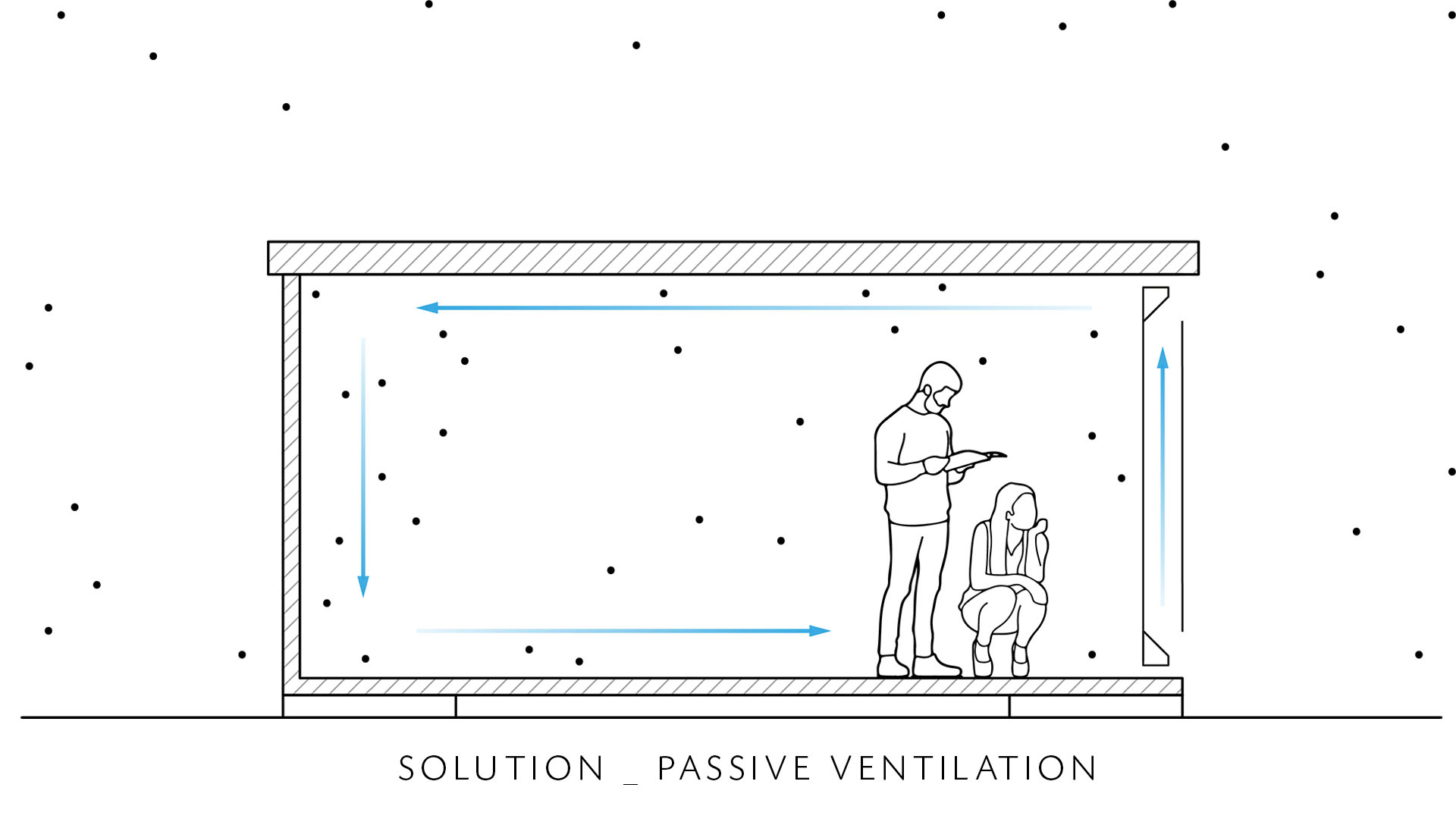
Indoor air quality is an invisible and often underestimated health risk that can have serious consequences, especially in small living spaces. In extreme cases, indoor air is 25 times more harmful than the air outside, which is particularly caused by organic substances such as mold, or particles from combustion and dust. The easiest way to ventilate is to open a window, but it turns out that this is often not done regularly enough, especially in winter. Electric vents, on the other hand, are unpopular among Tiny House residents because of their energy consumption. Natural energy sources such as solar radiation or wind are already used in many ways in Tiny House communities, which is why the question arose: Why don't we use them for passive ventilation as well?
![]()
![]()
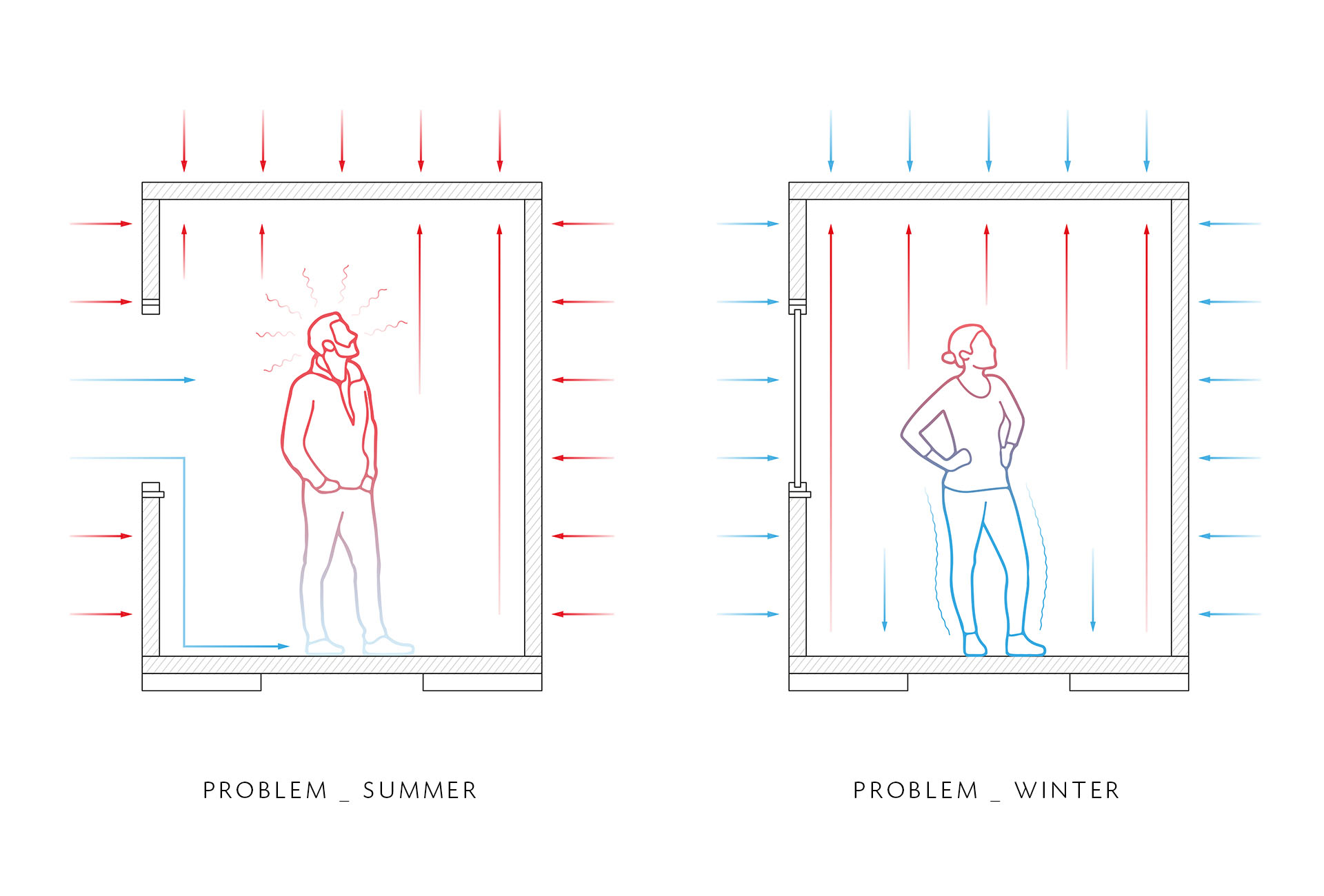

HOW ?
INTEGRABILITY VS. EFFICIENCY?



The topics of natural ventilation / air quality and the use of solar radiation have long been discussed in architecture. The task now was to transform these ideas into a much smaller application. Prefabricated large-scale approaches were less suited to the work scope than integrable and self-applicable ideas.


For the development of the concepts, storyboards were first created whose stories had concrete similarities despite their different contents. The beginning (need for the product) and the end (product in operation) are identical. The constellation of actors also remains the same. Therefore, there were no more comparison errors and only the actual idea and not a position or circumstance was evaluated. All three concepts took into account the strong hands-on / DIY mentality of the end-usersecoeco-friendly-friendlyeco-friendly and balanced the installation effort with the possible efficiency. BRAUN as a partner chose a direct integration approach with a strong focus on visualization.



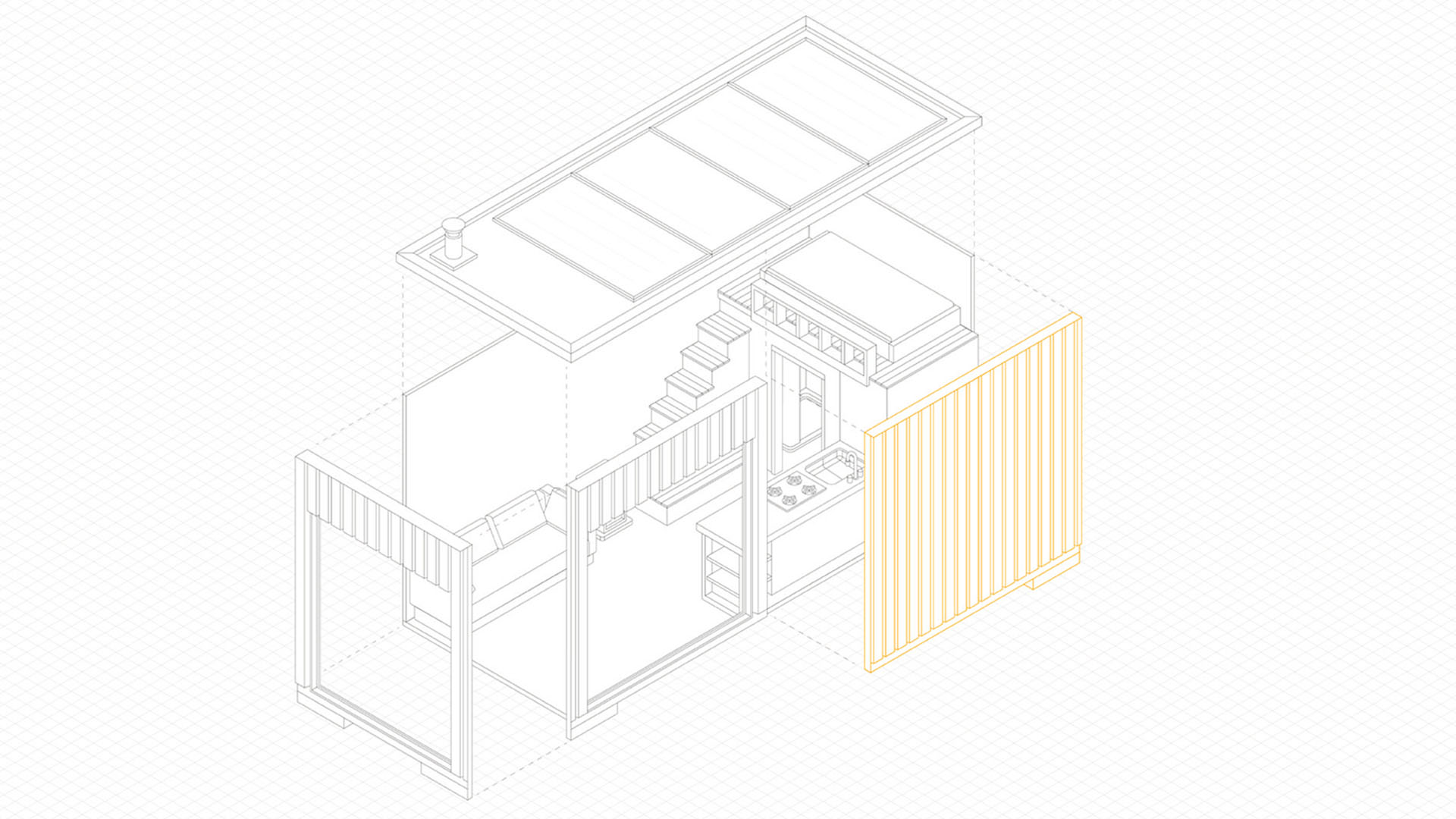





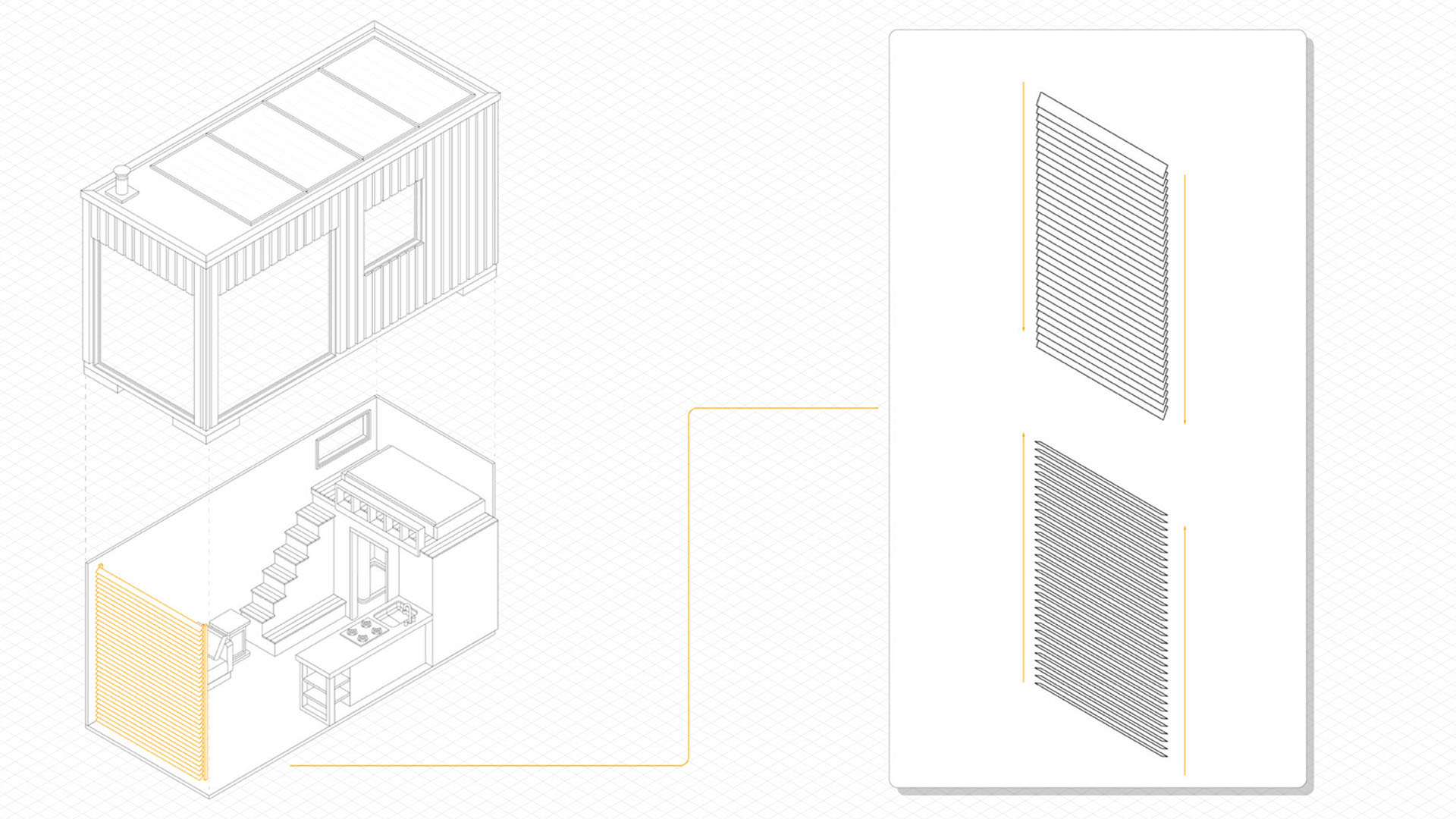






The final concept of BREATHE is an architectural window-like solution that connects the indoor space with the outdoor environment and takes up little space due to its slim profile. Apart from the control system, the concept requires no electricity and generates its ventilation through the chimney effect. In „summer mode“ stiff slats ensure that fresh air is drawn in quickly. In „winter mode“ absorbed air is first heated by stored solar radiation and mixed through the slats so that there are no excessive heating losses in winter. This visual effect is also intended to generate the necessary attention that the topic of indoor air quality urgently needs.


TESTING TECHNICAL AND OPTICAL IMPACT ...



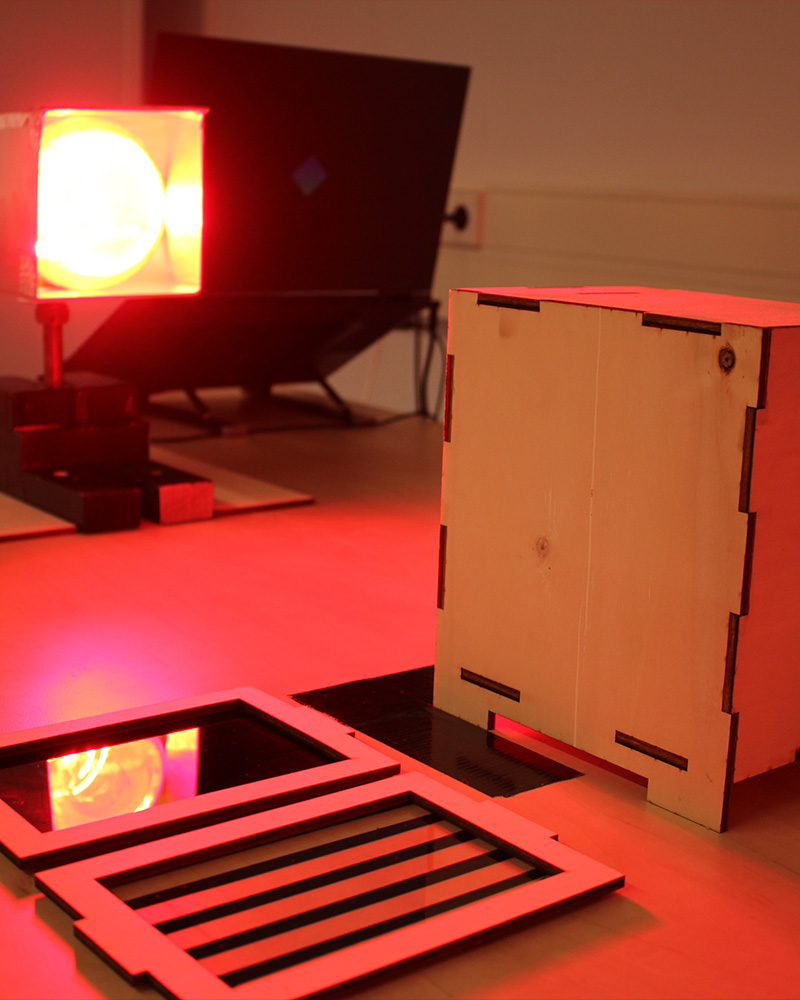


For technical verification, an A/B test was carried out to simulate parts of the concept in use by studying how a glass chamber with different coating patterns absorbs solar radiation. This heating plays a major role in the creation of the natural chimney effect and must therefore be fine-tuned. The hypothesis has proven true, that a striped glass pane (simulation of the slats) produces enough heat in the glass chamber without blocking too much energy for the interior.
In a final test, it was examined how the intended movement sequences affect the mental well-being of the residents. The MOCK UPs could animate different motion sequences which were studied while the participants performed a task in a close environment. The surprise: the greater the freedom of movement of the slats, the more soothing and less disturbing they were perceived.
In a final test, it was examined how the intended movement sequences affect the mental well-being of the residents. The MOCK UPs could animate different motion sequences which were studied while the participants performed a task in a close environment. The surprise: the greater the freedom of movement of the slats, the more soothing and less disturbing they were perceived.





PROJECT VIDEO / SUMMARY
TASK _ CREATE A VENTILATION SOLUTION FOR TINY HOUSES
︎︎︎
WHY ?
IDENTIFYING THE PROBLEM THROUGH EARLY ADOPTERS ...










Fortunately, there are many Tiny House settlements in the Netherlands. In Rotterdam, we were able to visit a settlement that was under construction. In Kamerik we learned more about the commercial use of Tiny Houses and in Delft, we met people who have been living in a settlement for a long time and have gained a lot of experience. We investigated the house construction, the lifestyle of the inhabitants, and their energy usage.
We asked specifically about problems with indoor air and were able to quickly pinpoint issues that arise from reduced living space. Further Key-Insights:
01 _ The sustainability of such settlements goes beyond saving space and resources and aims for self-sufficiency. 02 _ The climatic difference between summer and winter is far more dramatic for Tiny Houses than in classic living situations. 03 _ Residents do not simply want to use things. They want to understand and grasp them in detail, which is expressed in a strong do-it-yourself mentality.
01 _ The sustainability of such settlements goes beyond saving space and resources and aims for self-sufficiency. 02 _ The climatic difference between summer and winter is far more dramatic for Tiny Houses than in classic living situations. 03 _ Residents do not simply want to use things. They want to understand and grasp them in detail, which is expressed in a strong do-it-yourself mentality.


Indoor air quality is an invisible and often underestimated health risk that can have serious consequences, especially in small living spaces. In extreme cases, indoor air is 25 times more harmful than the air outside, which is particularly caused by organic substances such as mold, or particles from combustion and dust. The easiest way to ventilate is to open a window, but it turns out that this is often not done regularly enough, especially in winter. Electric vents, on the other hand, are unpopular among Tiny House residents because of their energy consumption. Natural energy sources such as solar radiation or wind are already used in many ways in Tiny House communities, which is why the question arose: Why don't we use them for passive ventilation as well?
![]()
![]()


HOW ?
INTEGRABILITY VS. EFFICIENCY?



The topics of natural ventilation / aireco-friendly quality and the use of solar radiation have long been discussed in architecture. The task now was to transform these ideas into a much smaller application. Prefabricated large-scale approaches were less suited to the work scope than integrable and self-applicable ideas.


For concept development, storyboards were first created whose stories had concrete similarities despite their different contents. The beginning (need for the product) and the end (product in operation) are identical. The constellation of actors also remains the same. Therefore, there were no more comparison errors and only the actual idea and not a position or circumstance was evaluated. All three concepts took into account the strong hands-on / DIY mentality of the end-userseco-friendly and balanced the installation effort with the possible efficiency. BRAUN as a partner chose a direct integration approach with a strong focus on visualization.
















The final concept of BREATHE is an architectural window-like solution that connects the indoor space with the outdoor environment and takes up little space due to its slim profile. Apart from the control system, the concept requires no electricity and generates its ventilation through the chimney effect. In „summer mode“ stiff slats ensure that fresh air is drawn in quickly. In „winter mode“ absorbed air is first heated by stored solar radiation and mixed through the slats so that there are no excessive heating losses in winter. This visual effect is also intended to generate the necessary attention that the topic of indoor air quality urgently needs.


TESTING TECHNICAL AND OPTICAL IMPACT ...






For technical verification, an A/B test was carried out to simulate parts of the concept in use by studying how a glass chamber with different coating patterns absorbs solar radiation. This heating plays a major role in the creation of the natural chimney effect and must therefore be fine-tuned. The hypothesis has proven true, that a striped glass pane (simulation of the slats) produces enough heat in the glass chamber without blocking too much energy for the interior.
In a final test, it was examined how the intended movement sequences affect the mental well-being of the residents. The MOCK UPs could animate different motion sequences which were studied while the participants performed a task in a close environment. The surprise: the greater the freedom of movement of the slats, the more soothing and less disturbing they were perceived.
In a final test, it was examined how the intended movement sequences affect the mental well-being of the residents. The MOCK UPs could animate different motion sequences which were studied while the participants performed a task in a close environment. The surprise: the greater the freedom of movement of the slats, the more soothing and less disturbing they were perceived.





PROJECT VIDEO / SUMMARY
FINAL
RESULT
Project Titel _ BREATHE | Individual Project + Group Research
Coach Erik van Kuijk / Expert SupportGert Pasman, James Broadhead and Gijs Huisman | TU DELFT
Developed in cooperation with BRAUN De´Longhi / Frankfurt
National Winner of the James Dyson Award 2022
Big thanks to the tiny house communities and interview partners from Kamerik, Delft, and Rotterdam / Netherlands.
Big thanks to Erik Mantz-Hansen for his animation support.
Special thanks to Laura F. Drost, Qixiu Zhang, Wouter B. Kruithof, and Vincent S. P. van den Burg for their research support.
Coach Erik van Kuijk / Expert SupportGert Pasman, James Broadhead and Gijs Huisman | TU DELFT
Developed in cooperation with BRAUN De´Longhi / Frankfurt
National Winner of the James Dyson Award 2022
Big thanks to the tiny house communities and interview partners from Kamerik, Delft, and Rotterdam / Netherlands.
Big thanks to Erik Mantz-Hansen for his animation support.
Special thanks to Laura F. Drost, Qixiu Zhang, Wouter B. Kruithof, and Vincent S. P. van den Burg for their research support.
Project Titel _ BREATHE | Individual Project + Group Research | Coach Erik van Kuijk / Expert SupportGert Pasman,
James Broadhead, and Gijs Huisman | TU DELFT | Developed in cooperation with BRAUN De´Longhi / Frankfurt |
National Winner of the James Dyson Award 2022
Big thanks to the tiny house communities and interview partners from Kamerik, Delft, and Rotterdam / Netherlands | Big thanks to Erik Mantz-Hansen for his animation support | Special thanks to Laura F. Drost, Qixiu Zhang, Wouter B. Kruithof, and Vincent S. P. van den Burg for their research support
Big thanks to the tiny house communities and interview partners from Kamerik, Delft, and Rotterdam / Netherlands | Big thanks to Erik Mantz-Hansen for his animation support | Special thanks to Laura F. Drost, Qixiu Zhang, Wouter B. Kruithof, and Vincent S. P. van den Burg for their research support